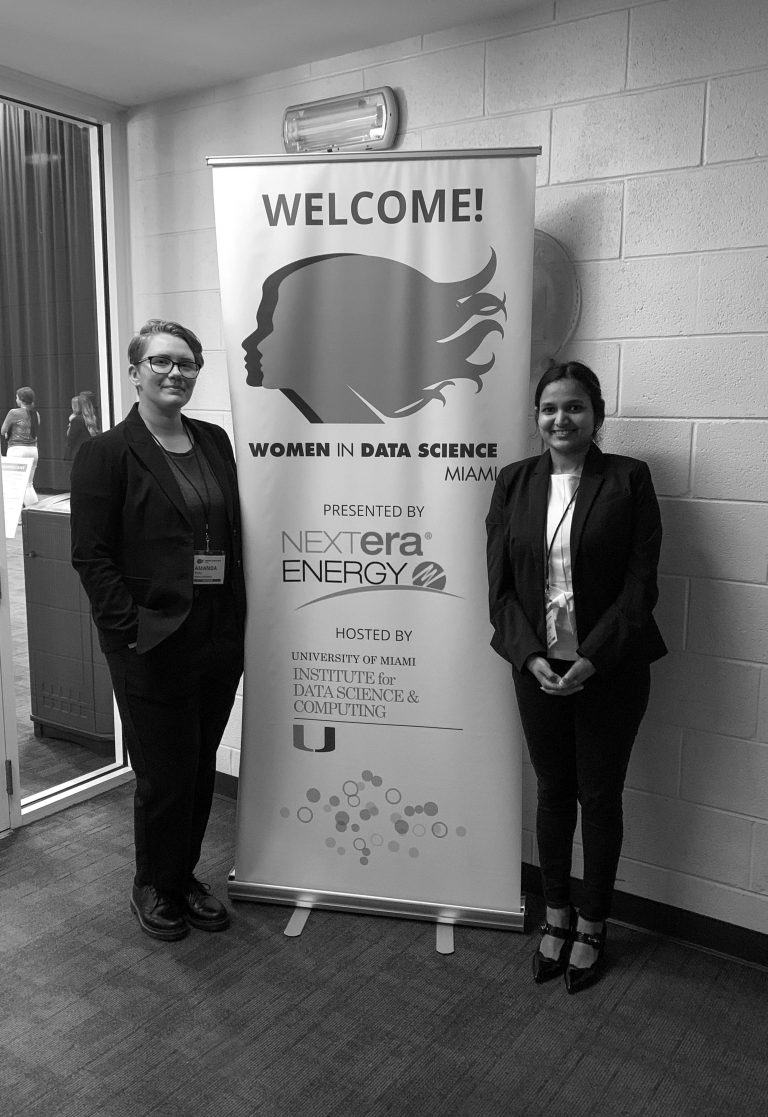March 13, 2020
Blog
Pranjali Padghan – Spotlight on Women in Data Science
Pictured: Amanda Kelly and Pranjali Padghan, Women in Data Science Conference, Miami, Florida
Contributed by Pranjali Padghan, Software Developer, Nanotronics
This past week, Engineering Specialist Amanda Kelly and I were invited to speak at the Women in Data Science Conference in Miami, Florida. It was a productive and inspiring experience for us to meet some of the sharpest minds in data science coming from diverse educational backgrounds and companies.
Our presentation began with a general overview of AI and the difference between machine learning and deep learning. We delved into the way machine learning requires structured data, such as in image recognition, image resolution, and machine learning needs the identification of a vast number of faces, whereas deep learning uses neural networks to make intelligent decisions. In other words, in deep learning, through the use of a rich, well-labeled dataset, AI is able to learn to make accurate predictions. Next, we moved on to a broad introduction of optical microscopy. I described how a light source is projected onto a sample which is then transmitted or reflected back to the camera, mounted on top. I presented Nanotronics’ method of scanning large areas by sampling smaller portions and then stitching the whole image together.
This led me to further outline Nanotronics’ method of integrating AI with a complicated system like an automated optical microscope. We presented several use cases of how AI has helped Nanotronics with faster and more efficient processing in various areas, such as continuous scanning, flat-field correction using a camera card, and AI analysis:
1. Continuous Scanning:
The XY axis stage controller works in conjunction with the camera to capture images at different locations without ever actually having to stop at those locations. This helps our customers acquire faster data acquisition and reduced process time. These acquired images are then processed by AI.
2. Flat-field Corrections Using a Camera Card:
Flat-field correction is a very computationally expensive process. We used a dedicated camera card for this process which reduced the load on CPUs.
3. AI Analysis:
Nanotronics’ goal is to help our customers to analyze and inspect their products most efficiently. The most important aspect of our AI integration is that our algorithms are run in real-time. As a customer scan is in process or as their images are being captured, their images are simultaneously being analyzed by AI for features of interest and anomalies based on their labels.
The audience was receptive to our presentation, which was gratifying for us. The other talks ranged from technical presentations about new methods in machine learning and AI training to career advice about how to successfully navigate your way through the world of data science as a female developer. We were honored to have the opportunity to share knowledge and gather insights from other women who are changing the field with their innovative work. Connecting with these empowered women was the best way to celebrate International Women’s Day. It will continue to inspire us in our careers at Nanotronics: in how we build confidence in every woman’s ability to innovate. We must use our voices to amplify the ideas of women in STEM! #girlpower

